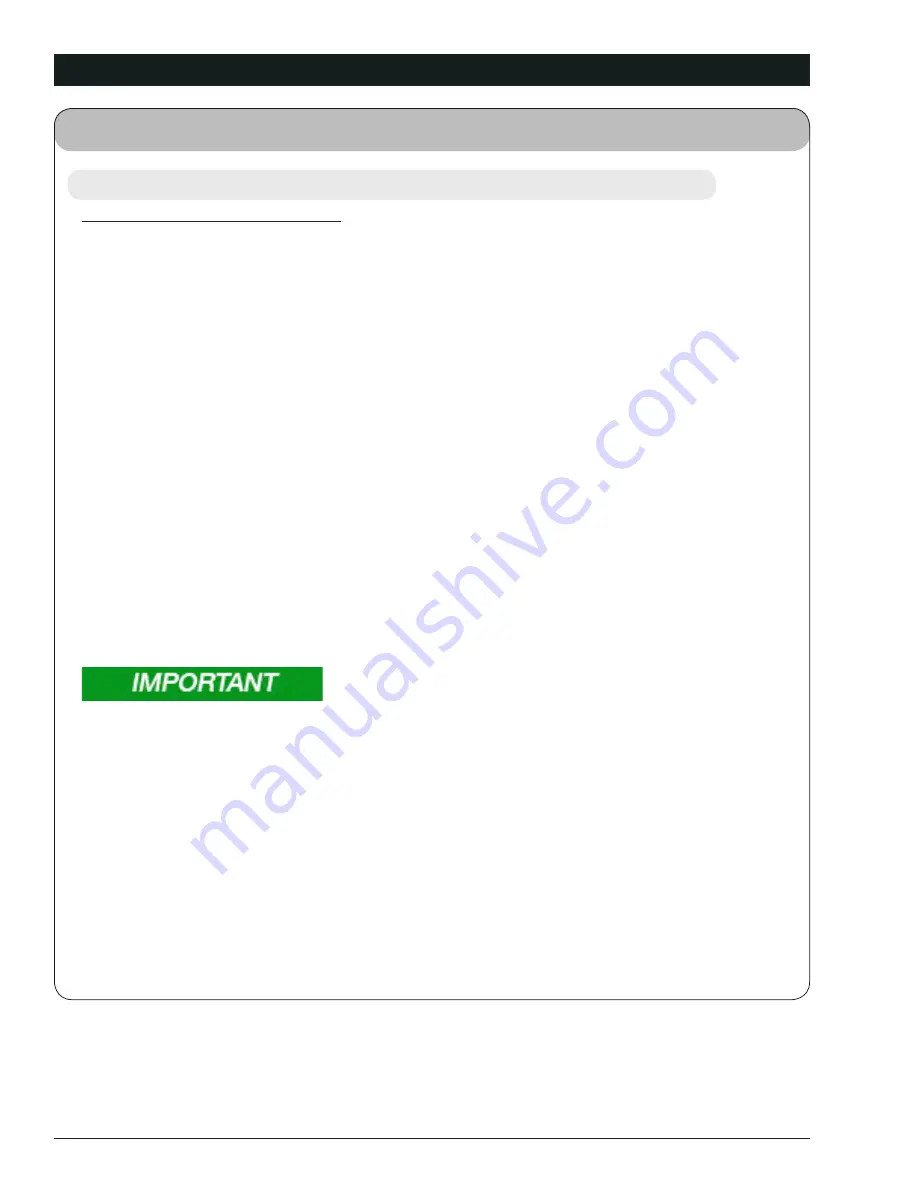
Scales - Models 410 and 520
— Operation & Maintenance
3-22
Scale Troubleshooting
(continued)
Ensuring maximum accuracy
(continued)
Basic Troubleshooting for all carts:
10. Inspect the front hitch bar to make sure it’s installed right side up, not upside down. The
correct orientation for the hitch bar had the ID decal located on top. There is also a direc
-
tion arrow on the front of the bar (tractor end) that should point up. May need to remove
the hitch casting to see the decal.
11. When the operator unloads the cart into a wagon or truck, make sure the tractor and grain
cart are position to pull straight ahead so there is no turning well before stopping to unload.
This will minimize any sideways binding that can occur during turning.
12. Model 410 scale requires pressing the START/STOP button at the beginning and at the end
of the unload process to show how much grain is unloaded from the cart. When starting
the unload operation, the grain cart must be fully stopped, tractor and cart settled and the
auger folded out into working position. Engage tractor PTO and raise PTO speed to 1000
RPM. Next, press the START/STOP button on the indicator display to show a temporary 0
and begin the unload process. Open the cart flow door, unload grain from the cart, close the
door when finished, stop the tractor PTO and bring the tractor and cart to a complete stop.
While stopped, with the cart’s auger still out in the unloading position, press the START/STOP
button again to conclude the unload process. The indicator will display PRINT showing the
conclusion of the unload process, and the weight that was displayed at that moment (the
amount unloaded from the grain cart) will either print to an optional printer or be stored in
the external memory module of the optional Data Downloader (DDL) kit if purchased. Imme
-
diately thereafter, the indicator will display the weight of grain remaining in the cart. If they
are manually writing the unloaded weight down for their records, the operator must use the
weight displayed before pressing the START/STOP button.
• It is extremely important the cart is still stationary (not moving) when this takes place to
minimize weight shifts due to cart movement or auger folding. Because this is a portable
scale, the operator must be very patient and consistent on every load during the unload
process to achieve maximum accuracy.
13. It is suggested that any adjustments to calibration be based on a minimum 3-5 load aver
-
age. Changing the CAL number once noticing one load differential makes it more difficult
to work within the +/-1% tolerance (roughly 1% in either direction), causing a difference from
one extreme to another.
14. Grain carts equipped with single tires and 3-point scales or 2000 bushel carts with steerable
tandems use 3 3/4” diameter front hitch bar (Unverferth #9004913 / Digi-Star #404760). Sev
-
eral other grain carts use a 3 3/4” diameter front hitch bar (Unverferth #9004910 / Digi-Star
#404756). Consult your operators manual to verify that the correct hitch bar is installed for
your application or contact Unverferth Product Support if necessary.
















































